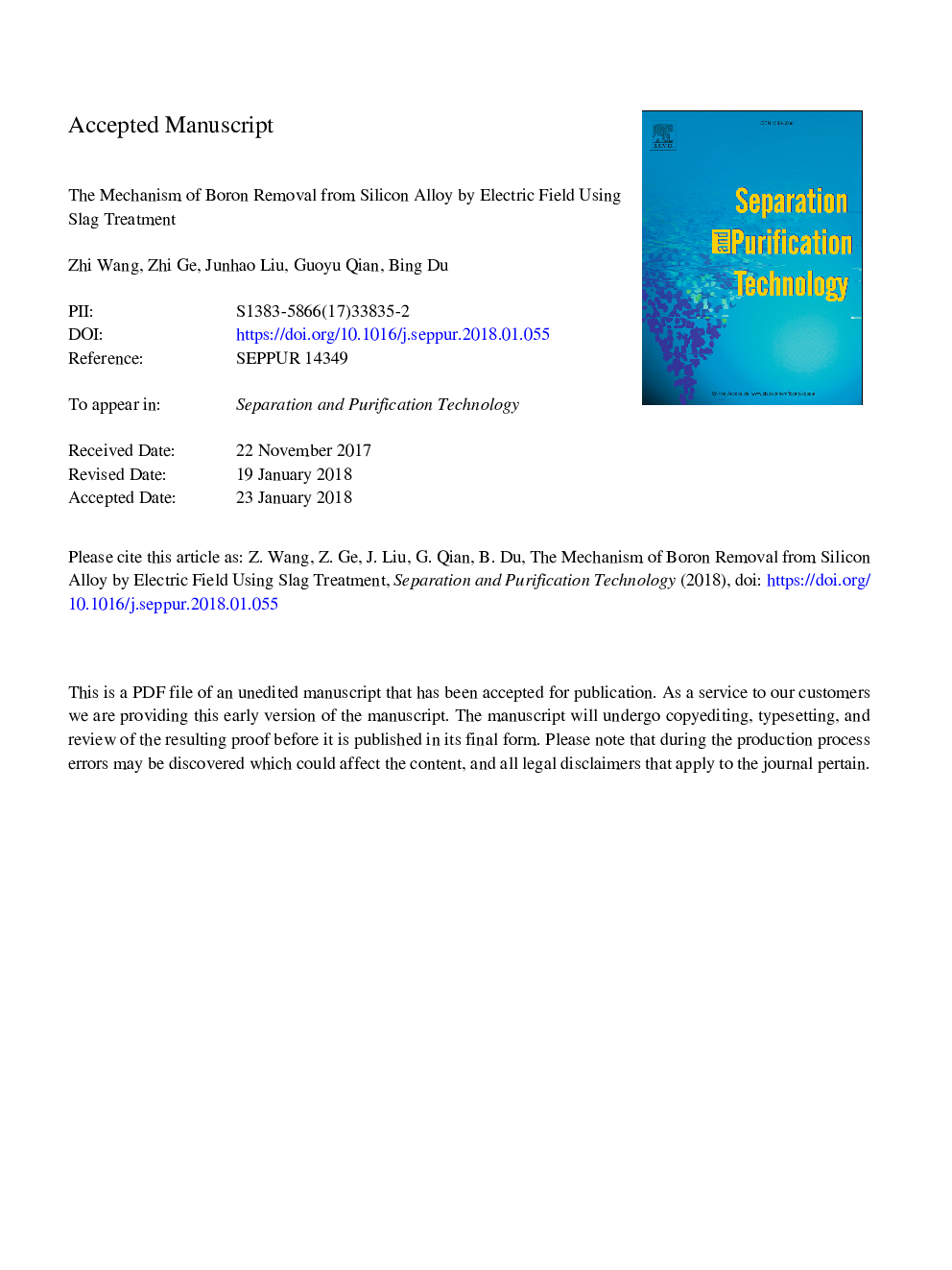| Article ID | Journal | Published Year | Pages | File Type |
|---|---|---|---|---|
| 7043843 | Separation and Purification Technology | 2018 | 20 Pages |
Abstract
Stubborn nonmetallic impurity boron is the most difficult to be removed by the metallurgical route for solar grade silicon (SoG-Si) production. To break through the restriction of separation of trace impurity, a novel approach by applying an electrical potential between the slag and the solvent phases to enhance silicon alloy refining using slag was developed. The effect of the external potential and refining time on boron removal has been investigated. For silicon, Al-Si, or Sn-Si system, it can be found that the removal efficiency of B substantially increased with the augment of the external potential. When the external potential was increased to 6â¯V, the partition ratio of boron increased to 5.7, which was about ten times than that without the external potential applied. Under the constant external potentials, the boron content also decreased with increasing refining time in the Al-Si system, and three stages of average removal velocity of boron were presented within 2â¯h. In addition, the synergistic removal mechanism of boron with electric field was investigated for the first time. For the electrode reaction, B is oxidated to the oxidizing products, then the oxide crosses the boundary layer rapdily and finally is absorbed by slag owing to the transfer of O2â at the anode, at the same time Si is produced at the cathode, which provides theoretical support for this new purification process.
Related Topics
Physical Sciences and Engineering
Chemical Engineering
Filtration and Separation
Authors
Zhi Wang, Zhi Ge, Junhao Liu, Guoyu Qian, Bing Du,
